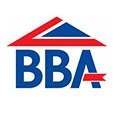JUB Render Maintenance Guide: Redecorating your External Render
In this guide, we will cover the topic of how to redecorate your render if required after an examination. By following our guide, you’ll be able to preserve the quality of the applied JUB render or external wall insulation system.
As with all things, when you take care and look after your facade, it will result in reducing the amount of maintenance needed to a minimum for the future.
How to Redecorate External Render: Step-By-Step Guide
Once an examination of the facade has been made and it is deemed necessary for it to be redecorated, here are the steps you should follow:
Cleaning & Primer
The external render should always be thoroughly cleaned before any work has been started. If needed, the facade can be treated with JUB Fungi Wash.
No visible dirt or dust should be left visible. (IMPORTANT: Do not use acid-based cleaners or solvents (mineral spirits/paint thinners, etc) as these products are not compatible and can lead to damage to the external wall insulation system.)
We highly recommend treating the external render with an appropriate paint primer.
Choosing the correct paint
It is important to choose the correct paint needed for the specific type of render. Don’t hesitate to contact our technical department at technical@jub.org.uk , if you need any help with choosing the correct product.
Do not use any masonry paint that has not been advised by JUB Systems UK Limited. This can result in invalidating any applicable warranties and the property will enter a short-term maintenance cycle regime. This is due to the fact that the paint might not be compatible with the render finish.
We strongly advise for the original render’s colour code to be kept on file in some way or another so that we can best match it if needed in the future.
Application
Be wary of painting isolated areas of the external render since they will be noticed against the non-painted sections. We recommend you use a brush when painting small areas. If a big or heavy brush is used especially around windows and trims, this can result in noticeable texture differences.
Larger areas can be painted using a roller, applying vertical strokes that overlay by half the roller width. Depending on the texture and colour of the existing finish it may be necessary to apply the paint in two or three coats.
Pro Tip: Avoid painting in strong daylight as rapid drying can take place.
Ensure that all masking is carried out and if only one elevation is to be painted, then a straight tape joint onto the existing render will be required.
If you’d like to re-apply the topcoat render, it’s best to speak to our technical department to be advised correctly.
Do you have any questions we’ve not covered here? Or learn more about our products?
Don’t hesitate to contact our team on 0845 688 9866 or ping us an email at info@jub.org.uk .
You can also read more about maintaining your external render here .
The post JUB Render Maintenance Guide: Redecorating your External Render appeared first on JUB Render Systems.


Why Silicone Render is the Best Choice for a Property’s Exterior: Benefits, Application & Aesthetics











